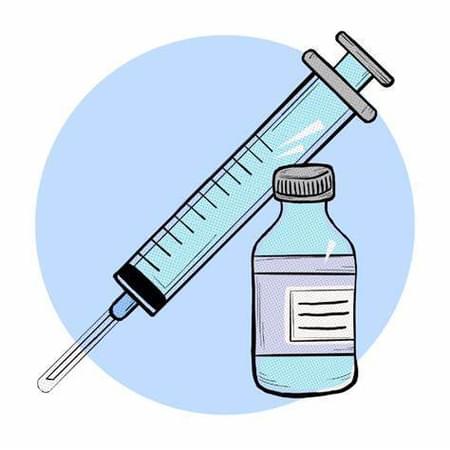By Nia Mwangi, Staff Writer
Most people have received multiple vaccines in their lifetime. However, many people might not even know what vaccines are or how they work.
According to What Your Doctor May Not Tell You About Children's Vaccines by Stephanie Cave, vaccines are substances that try to defend the body against a specific disease.
The first recorded attempt at a vaccine-like treatment was during the 17th Century. A group of Buddhists decided they would try to become immune to the effects of snake venom by drinking it. Between the late 18thCentury and the late 19th century, a French chemist named Louis Pasteur was trying to investigate this issue. He had a concept of attenuation, using the weakened form of a virus in order to provide immunity. He created a rabies vaccine in 1885, but there were protests from both doctors and the public.
Cave’s book explains that in the beginning of 1955, the fear of polio was so great that when Jonas Salk and Albert Sabin created injectable vaccines for it, it was welcomed with open arms. Throughout the decades, more vaccines were created, like the MMR vaccine, DTaP vaccine, Hepatitis B vaccine, pneumococcal vaccine, and many more.
According to Cave’s book, vaccines are made with the “‘bug’ material”, which are the viruses, toxoids, or DNA; the ingredients to perform many different functions like keeping the vaccine from getting contaminated and encouraging the body to produce more antibodies; and the culture that the vaccines are prepared in, which weakens or kills the viruses that are inside of the vaccines.
A live virus, which is the “‘bug’ material”, is weakened by repeatedly passing it through a culture medium, and killed vaccines are inactivated using heat, radiation or chemicals. The ingredients of a vaccine may include a preservative like ethylene glycol, and neomycin to glutamate, a stabilizer against environmental conditions such as heat. Vaccines enter the body to trick it into creating antibodies to fight against it.
Some of those antibodies stay in the body if exposure to the disease recurs, , which protects the body and gives it immunity. There are two types of immunity: natural and vaccinated. Natural immunity is an immunity that occurs due to the actual virus entering the body. Due to this, the immune system stimulates antibodies which are usually permanent.
Vaccinated immunity is artificial. The vaccines bypass many of a body's natural defenses, so the immune system responds by overproducing antibodies to fight the infection. This vaccinated immunity is often temporary, and one usually needs to have booster shots of this vaccine in order for it to work efficiently. Most vaccines are given to infants because the immunity an infant gets from its mother at birth wears off during their first year of life. Throughout the decades, the number of vaccines administered to children has increased.
In 1980, infants received vaccines against diphtheria, tetanus, pertussis and polio. In the early 21st Century, children were recommended to have up to 15 doses of five vaccines to protect against seven diseases by 6 months of age and up to 20 doses of seven vaccines to protect against 11 diseases by 2 years of age. This is all according to the book Immunization Safety Review: Multiple Immunizations and Immune Dysfunction by Kathleen Stratton, Christopher Wilson, and Marie McCormick.
According to the CDC, children are now recommended to get at least 25 doses of 12 vaccines between birth and 15 months of age, and 10 doses of nine vaccines, two of those nine vaccines being given annually, between 18 months and 18 years of age.
Fort more information about vaccines, visit the CDC website: www.cdc.gov/index.html.




